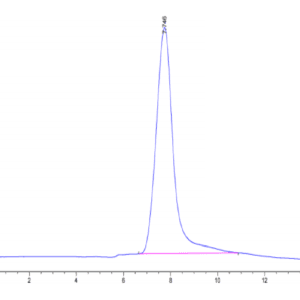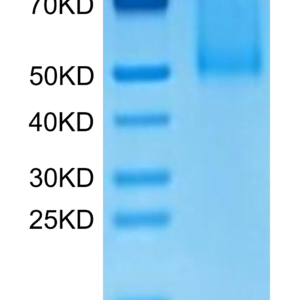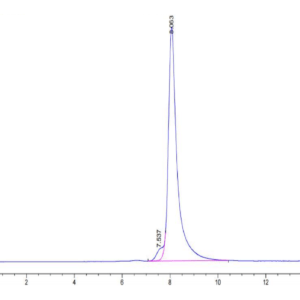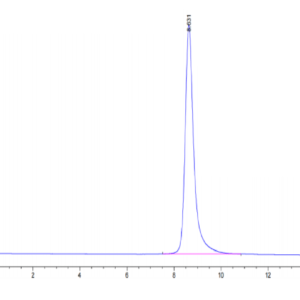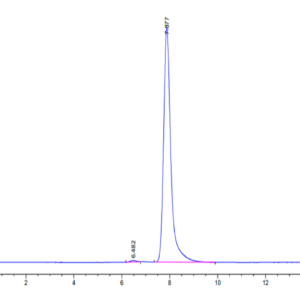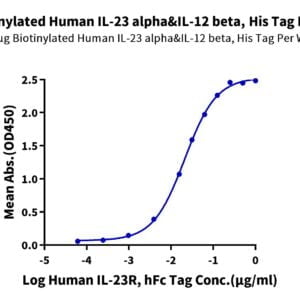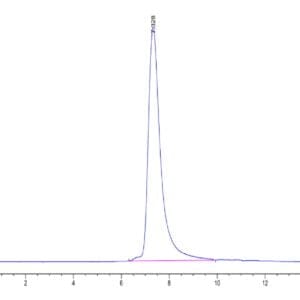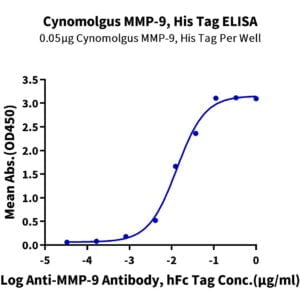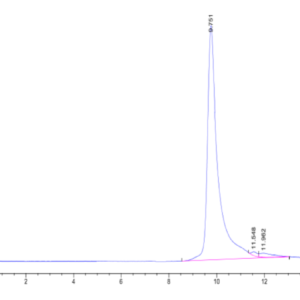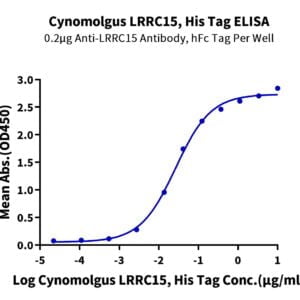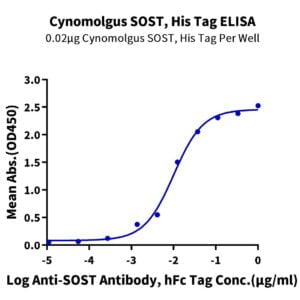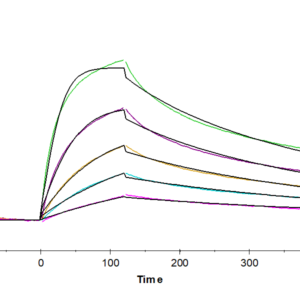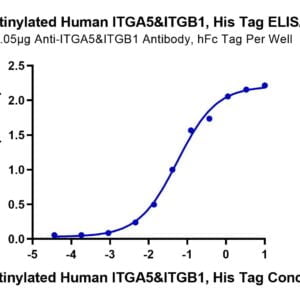| Weight | 1 lbs |
|---|---|
| Dimensions | 9 × 5 × 2 in |
| accession | Q9QZ15 |
| express system | HEK293 |
| product tag | C-hFc |
| purity | > 95% as determined by Tris-Bis PAGE;> 95% as determined by HPLC |
| background | Clec4a has been reported to be an immune suppressor of dendritic cells (DCs), but its potential role in cancer therapy remains to be elucidated. silencing of Clec4a2 expression via skin delivery of shRNA produces an effective antitumor response and that Clec4a2 shRNA may have therapeutic potential as an adjuvant for cancer immunotherapy. |
| molecular weight | The protein has a predicted MW of 46.3 kDa. Due to glycosylation, the protein migrates to 60-65 kDa based on Tris-Bis PAGE result. |
| available size | 100 µg, 500 µg |
| endotoxin | Less than 1EU per μg by the LAL method. |
Mouse CLEC4A/DCIR Protein 3600
$270.00 – $900.00
Summary
- Expression: HEK293
- Pure: Yes (HPLC)
- Amino Acid Range: Gln70-Leu238
Mouse CLEC4A/DCIR Protein 3600
| protein |
|---|
| Size and concentration 100, 500µg and lyophilized |
| Form Lyophilized |
| Storage Instructions Valid for 12 months from date of receipt when stored at -80°C. Recommend to aliquot the protein into smaller quantities for optimal storage. Please minimize freeze-thaw cycles. |
| Storage buffer Shipped at ambient temperature. |
| Purity > 95% as determined by Tris-Bis PAGE |
| target relevance |
|---|
| Clec4a has been reported to be an immune suppressor of dendritic cells (DCs), but its potential role in cancer therapy remains to be elucidated. silencing of Clec4a2 expression via skin delivery of shRNA produces an effective antitumor response and that Clec4a2 shRNA may have therapeutic potential as an adjuvant for cancer immunotherapy. |
| Protein names C-type lectin domain family 4 member A (C-type lectin superfamily member 6) (Dendritic cell immunoreceptor) (CD antigen CD367) |
| Gene names Clec4a,Clec4a Clec4a2 Clecsf6 Dcir |
| Mass 10090Da |
| Function May be involved in regulating immune reactivity. May play a role in modulating dendritic cells (DC) differentiation and/or maturation (By similarity). May be involved in the inhibition of B-cell-receptor-mediated calcium mobilization and protein tyrosine phosphorylation.; C-type lectin receptor that binds carbohydrates mannose and fucose but also weakly interacts with N-acetylglucosamine (GlcNAc) in a Ca(2+)-dependent manner. Involved in regulating immune reactivity. Once triggered by antigen, it is internalized by clathrin-dependent endocytosis and delivers its antigenic cargo into the antigen presentation pathway resulting in cross-priming of CD8(+) T cells. This cross-presentation and cross-priming are enhanced by TLR7 and TLR8 agonists with increased expansion of the CD8(+) T cells, high production of IFNG and TNF with reduced levels of IL4, IL5 and IL13. In plasmacytoid dendritic cells, inhibits TLR9-mediated IFNA and TNF production (By similarity). May be involved via its ITIM motif (immunoreceptor tyrosine-based inhibitory motifs) in the inhibition of B-cell-receptor-mediated calcium mobilization and protein tyrosine phosphorylation (PubMed:11841542). |
| Catalytic activity BINDING 146; /ligand="Ca(2+)"; /ligand_id="ChEBI:CHEBI:29108"; /ligand_label="1"; /evidence="ECO:0000250|UniProtKB:Q9UMR7"; BINDING 152; /ligand="Ca(2+)"; /ligand_id="ChEBI:CHEBI:29108"; /ligand_label="1"; /evidence="ECO:0000250|UniProtKB:Q9UMR7"; BINDING 197..199; /ligand="alpha-D-mannopyranose"; /ligand_id="ChEBI:CHEBI:28729"; /evidence="ECO:0000250|UniProtKB:Q9UMR7"; BINDING 197; /ligand="Ca(2+)"; /ligand_id="ChEBI:CHEBI:29108"; /ligand_label="2"; /evidence="ECO:0000250|UniProtKB:Q9UMR7"; BINDING 199; /ligand="Ca(2+)"; /ligand_id="ChEBI:CHEBI:29108"; /ligand_label="2"; /evidence="ECO:0000250|UniProtKB:Q9UMR7"; BINDING 203; /ligand="alpha-D-mannopyranose"; /ligand_id="ChEBI:CHEBI:28729"; /evidence="ECO:0000250|UniProtKB:Q9UMR7"; BINDING 203; /ligand="Ca(2+)"; /ligand_id="ChEBI:CHEBI:29108"; /ligand_label="2"; /evidence="ECO:0000250|UniProtKB:Q9UMR7"; BINDING 209..211; /ligand="N-acetyl-D-glucosamine"; /ligand_id="ChEBI:CHEBI:506227"; /evidence="ECO:0000250|UniProtKB:Q9UMR7"; BINDING 219; /ligand="Ca(2+)"; /ligand_id="ChEBI:CHEBI:29108"; /ligand_label="2"; /evidence="ECO:0000250|UniProtKB:Q9UMR7"; BINDING 220; /ligand="Ca(2+)"; /ligand_id="ChEBI:CHEBI:29108"; /ligand_label="2"; /evidence="ECO:0000250|UniProtKB:Q9UMR7" |
| Subellular location Cell membrane ; Single-pass type II membrane protein ; Extracellular side . |
| Tissues Expressed in splenic antigen-presenting cells including B-cells, monocytes/macrophages, and dendritic cells (at protein level). Expressed in spleen and lymph node and slightly increased with dendritic cell maturation. |
| Structure May interact with PTPN6 via its ITIM site. |
| Domain Co |
| Target Relevance information above includes information from UniProt accession: Q9QZ15 |
| The UniProt Consortium |
Data
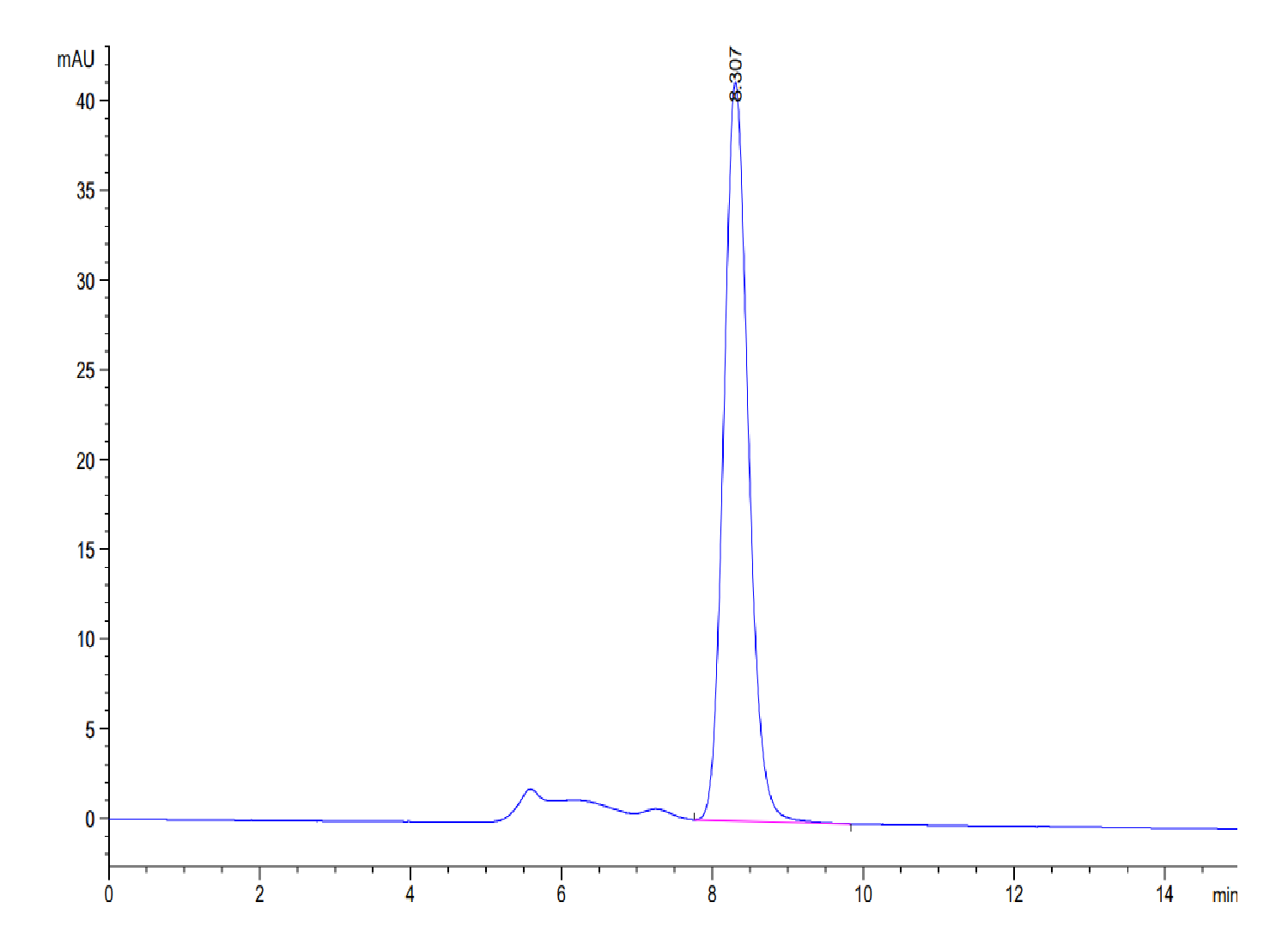 |
| The purity of Mouse CLEC4A/DCIR is greater than 95% as determined by SEC-HPLC. |
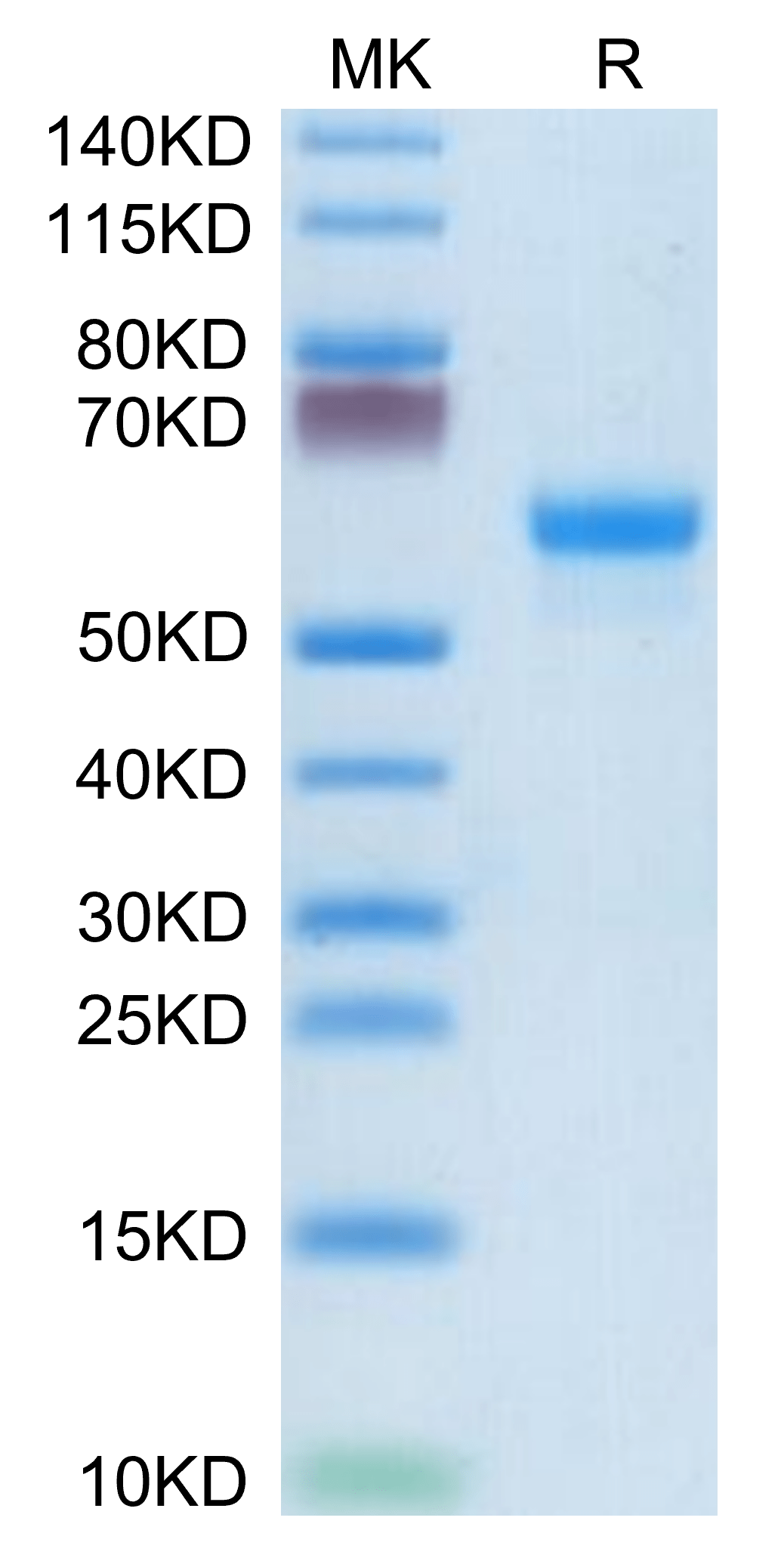 |
| Mouse CLEC4A/DCIR on Tris-Bis PAGE under reduced condition. The purity is greater than 95%. |
Publications
Publications
| pmid | title | authors | citation |
|---|---|---|---|
| We haven't added any publications to our database yet. | |||
Protocols
| relevant to this product |
|---|
Documents
| # | ||
|---|---|---|
| Please enter your product and batch number here to retrieve product datasheet, SDS, and QC information. | ||
